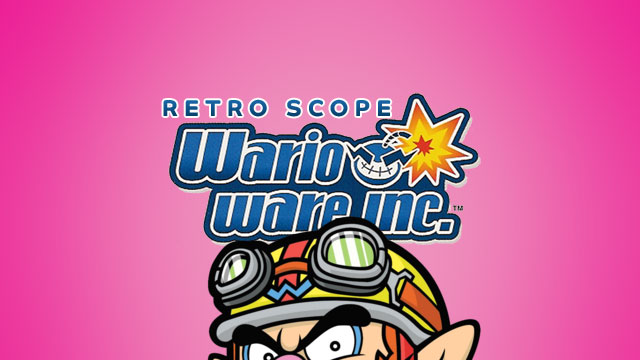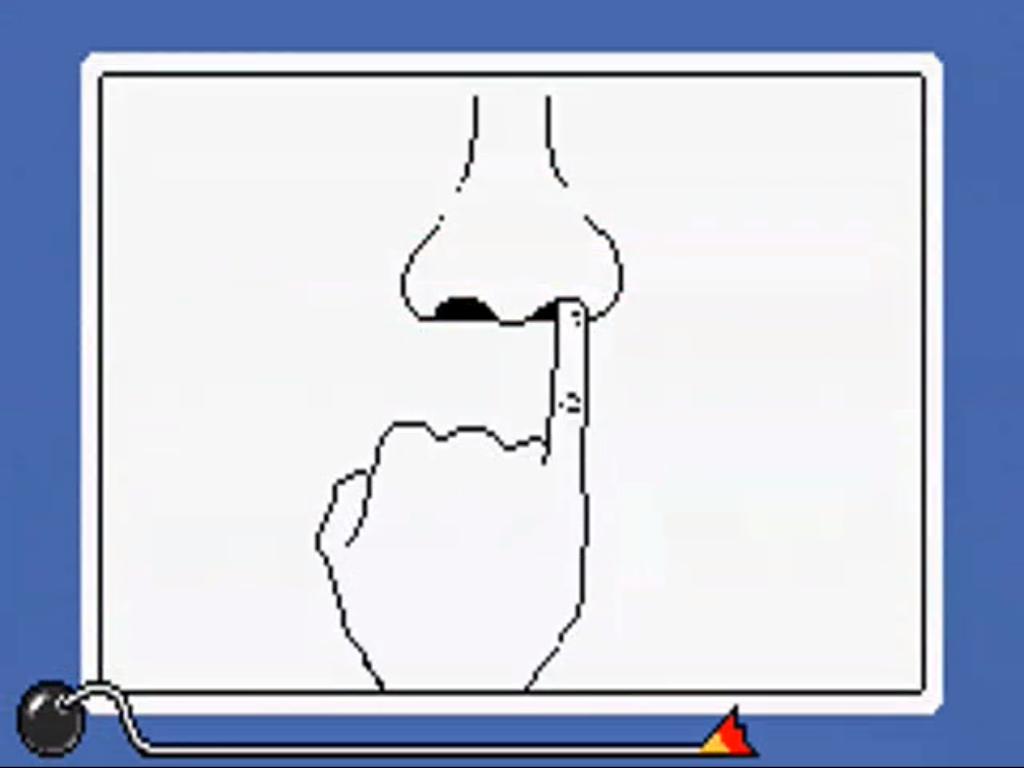
Press A to pick a nose. It is generally not the sort of thing I usually like doing in games, but when other tasks include dressing up Wario, a giant stomping foot, and a man balancing packages on a unicycle, it’s the sort of thing you get used to seeing in WarioWare, Inc.: Mega Microgames!
Originally released in 2003 on Game Boy Advance (and quickly ported to GameCube in 2004), the game was a weird and wonderful breath of fresh air, and a sharp deviation from Nintendo’s usual roster of games. While its sequels have all tried new ways of iterating on the original formula established in this, the GBA version still remains the simplest expression of what is so good about the series.
For those of you who haven’t played the original, the central premise is that, after seeing how much money can be made in video games, Wario decides to try making his own. It’s relatively basic, but only really exists to give some context to the game. There are a number of stages, hosted by either Wario or one of his friends (apparently he has them), who all make their debut here. This supporting cast actually have a surprising amount of character (which is most likely why they made a comeback in every sequel), and this is reflected in their respective microgame themes.

Gameplay in WarioWare, Inc. (to save space and punctuation) centres on these microgames that the group create. There is a huge variety, and all are incredibly simple to play– using only the directional pad and A button. The player has to figure out what to do within a few seconds, and is helped by only a brief word or phrase that appears on the screen. This time pressure was the real difference between WarioWare and other similar games at the time. The speed and difficulty gradually increase as you complete more of the games and each stage has its own nifty boss microgame. Then, after initially playing the levels, you can replay them to see how far you can get before running out of lives.
The gameplay in the WarioWare series hasn’t changed much over the years and is something that many gamers will likely be familiar with, so, having played the original and a number of its sequels, I was interested in going back to replay the original game in order to see how it holds up.
WarioWare, Inc.’s graphics are ever so slightly more fuzzy then I remember (in a very GBA kind of way), but this is only really noticeable after having played the far crisper DS games. The game always had plenty of charm though and, even at the time, never relied on or needed dazzling graphics. The quirky movements, characters, and general level themes in between microgames all have a distinct personality. Dribble’s taxi cab, Kat’s dojo, and even Crygor’s toilet, for example, all have a quirky pleasantness to them. In part, I feel like this is down to the game’s distinctly Japanese feel. Crygor’s new-age toilet, for example, is clearly Japanese (which means that it is far more advanced than our Western toilets, of course), and it adds a nice touch of variety to the visuals.
This extends to the microgames. Pushing a golf ball into a hole as a Wario dung beetle, bouncing objects off a Japanese man, and helping an anime girl to sniff up snot all have that curiously different factor that make Japanese games oddly compelling. Because of this, I could very easily see the game not translating well to a Western audience. I am certainly glad then that Nintendo did take a chance with this as, somehow, it did!

The microgames themselves are just as fun today as they were in 2003. It would be impossible to go over all of them, but suffice to say that their quick-fire, varied nature still makes them a blast to play. My personal highlight in the series has to be 9-Volt’s games, which are all riffs on classic Nintendo games. Dodge a barrel in Donkey Kong, shoot a duck in Duck Hunt, play a quick bout of F-Zero, and enter a dungeon from Zelda are just a few of 9-Volt’s microgames. These sorts of games undoubtedly influenced the recent Nintendo Ultimate Remix games– the idea of using short excerpts of its classic games. Alongside this, even the admittedly simple music remains oddly engaging. The beat gets faster and faster as you play and more than does its job of encouraging you to keep playing.
Part of WarioWare, Inc.‘s initial success was that its microgames, lasting only seconds, were perfectly suited to short bursts of gaming on the GBA. Indeed, the WarioWare games have always succeeded in making the most of the unique features of whatever console it is on, and while, for me, WarioWare: Touched! is a better example of the series playing to a console’s strengths, it only did this by iterating on what was already laid out in WarioWare Inc., which really was unique on its release. While the game is no longer quite so unique now, it is still just as satisfying to jump in and out of it for quick gaming sessions.

Sure, WarioWare has seen a number of iterations over the years, but going back to the original, it is easy to see why it was so addicting and how it became so popular. It isn’t as fully fleshed as its sequels, but the core gameplay of it is so inherently simple that it remains fun, even today. Trying for a high score is just as addictive, the microgames are just as weird and I still found myself laughing out loud when a strongman belted out a yell after lifting a dumbbell.
WarioWare, Inc. was clearly deliberately designed to be different from a typical Mario game, and, despite over a decade passing since its release, it still feels unique. If the recent Game & Wario didn’t satisfy you, then I would more than recommend picking this up on Wii U’s eShop. After all, you really shouldn’t pass on an opportunity to pick a virtual nose.




 ShareThis
ShareThis






